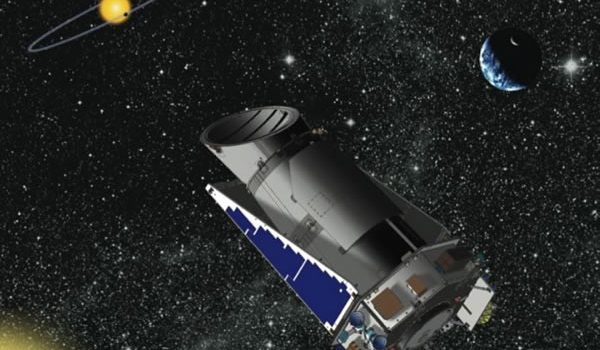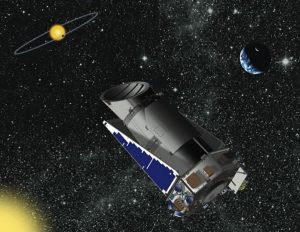

The Kepler space telescope, launched in 2009 to search for habitable planets outside the solar system (Credits: NASA).
NASA’s Kepler space telescope has been shut down into a precautionary “safe mode” after engineers noticed problems with its orientation mechanism.
“Resting the [reaction] wheels provides an opportunity to redistribute internal lubricant, potentially returning the friction to normal levels,” Kepler scientists reported in a mission update on January 17.
Kepler is supposed to remain idle for 10 days. The decision has been taken after an unexpected rise in the amount of torque needed to rotate one of the reaction wheels was noticed. Reaction wheels are spinning devices used in spacecraft attitude control systems. The space telescope uses this device to hold its position in space, keeping its precise aim at any of more than 150,000 target stars. During the “safe mode” time, the reaction wheels will be rested. The Kepler telescope originally had 4 reaction wheels in total, with 3 being used to control the spacecraft around the 3 axes plus 1 spare. One of the main wheels failed last July, and the spare was put into operation. Since the space telescope requires 3 functioning reaction wheels to work properly, another failure could potentially be the end of the 600 million dollar mission.
The Kepler space telescope was launched in March 2009, to hunt for planets and has spotted 2,700 potential exoplanets so far. The orbiting telescope finds planets by detecting the dip in stars’ brightness caused by the transit of exoplanets. Kepler generally needs to observe 3 of these crossings to identify a planetary candidate.
NASA announced in 2012 that it had extended the mission through at least 2016 so, if the remaining wheels keep spinning nominally, it could keep hunting for new planets in the sky for several more years to come.
Below is a short video showing the type of information gained from Kepler:

















































































































![A trajectory analysis that used a computational fluid dynamics approach to determine the likely position and velocity histories of the foam (Credits: NASA Ref [1] p61).](https://www.spacesafetymagazine.com/wp-content/uploads/2014/05/fluid-dynamics-trajectory-analysis-50x50.jpg)



Leave a Reply